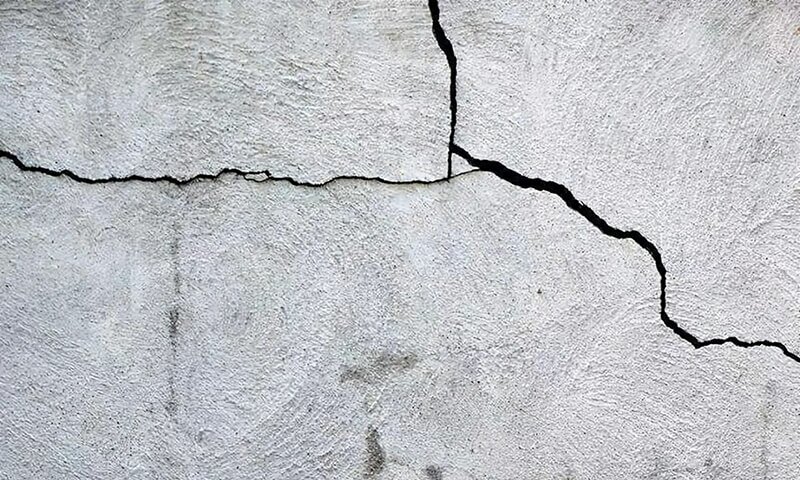Crack-resistant concrete has the ability to resist cracking due to dry shrinkage deformation or temperature deformation. This article will introduce 5 ways to improve crack-resistant concrete.
Control the quality of concrete raw materials to improve crack-resistant concrete
The quality of concrete raw materials has a very important impact on the performance of concrete. The performance of the raw materials used to prepare crack-resistant concrete must meet the quality requirements of its relevant standards. Cement has a large impact on the shrinkage of concrete. Low alkalinity, small specific surface area (300-350m2/kg), and low C3A content of cement should be used. Choose high-quality active admixture, using fly ash and mineral powder double admixture.
The quality of aggregates has a greater impact on crack-resistant concrete. Mud content and clay content should be controlled. Choose well-graded coarse sand and continuous gradation, small void rate of stone. Select a high-performance water reducer with a high water reduction rate and small shrinkage ratio.
Optimize concrete ratio parameters to improve crack-resistant concrete
Concrete ratio parameters have a great influence on the crack resistance of concrete. In order to improve the volume stability of the concrete, the design of the concrete ratio should follow the laws of the ratio design of crack-resistant concrete. That is low cement dosage, low water consumption, proper water-cement ratio, maximum aggregate bulk density, a double admixture of active admixture, and a high-efficiency water reducer. Under the condition of ensuring that the workability of the design and construction requirements are met, the coarse aggregate content of the concrete is increased as much as possible, the sand rate is reduced and the content of the slurry is reduced, while its concrete fluidity and uniformity are controlled.
Fibers for improving crack-resistant concrete
Currently, the main fibers widely used in research and engineering are carbon fiber, glass fiber, polypropylene fiber, and steel fiber. Fibers in civil engineering materials have a reinforcing, toughening, and crack-resisting effect. The incorporation of fibers into ordinary concrete can hinder the early volume shrinkage of concrete, resist the ability to generate micro-cracks within the concrete, and crack-resistant concrete. The crack-resistant mechanism of the fiber is mainly to prevent the expansion of cracks and to prevent the crack and crack penetration between the role. The critical spacing value of 10 mm. adding a variety of fibers to the crack resistance of concrete is better than adding a single species of fiber concrete.
Polyacrylonitrile fibers have a good effect on early plastic shrinkage cracking of concrete to stop cracking. When the fiber admixture is low (volume fraction < 2%), the crack-blocking effect is enhanced with the increase in fiber admixture, and the best anti-cracking effect of mixed fibers. Test comparison found: the best anti-cracking effect when 0.1% polyacrylonitrile fiber and 0.5% steel fiber are mixed in concrete. As the common fibers are easy to agglomerate when mixed with a higher amount, UF500 cellulose fiber is mixed into concrete to improve the crack resistance of concrete, which can effectively inhibit the formation and development of cracks caused by plastic shrinkage of concrete, temperature, and humidity changes, etc. UF500 fiber is easy to disperse in concrete, and the fiber will not agglomerate again after dispersion.
Expansion and shrinkage agents for improving crack-resistant concrete
The role of expansion agents and shrinkage reducers can not be generalized. Tests found that when the amount of fly ash is less than 30%, the appropriate amount of calcium sulfoaluminate – calcium oxide expansion agent can improve the cracking performance of concrete. However, when the amount of fly ash is high, the same measure will make the concrete cracking performance becomes worse. Calcium alumina-like expansion agent to inhibit the effect of early shrinkage of concrete is very obvious. But it is more difficult to control the late shrinkage of concrete. Because the drying shrinkage is larger after the restraint of expansion. In order to better play the role of compensatory shrinkage of the expansion agent, you can carry out early water conservation and extend the water conservation time. Expansion agent hydration produces Mg (OH) 2 and Ca (OH) 2. After hydration volume expansion, thereby reducing the shrinkage of concrete.
Shrinkage reducer has a good shrinkage reduction effect on the early shrinkage of concrete with a low water-cement ratio. For W / B < 0.32 of the concrete, its admixture can reduce a large part of the self-shrinkage, and the total shrinkage reduction is more significant. The effectiveness of the expansion agent in compensating for shrinkage requires good maintenance. For W/B>0.47 concrete, if good early moisturizing maintenance, the effect of adding shrinkage reducer is not obvious, because the dry shrinkage can be avoided by maintenance, which accounts for the majority of shrinkage.
Internal conservation agent for improving crack-resistant concrete
To solve the concrete cracking problem, the cracking resistance of concrete was enhanced by adding auxiliary anti-cracking materials. Highly absorbent resin SAP with typical functional polymers was incorporated into concrete, and there was a significant reduction in the early cracking area of concrete. The microstructure of the highly absorbent resin SAP contains polymer molecules with a reticulated structure. SAP can better preserve the water in concrete when it is mixed into concrete. As the hydration of concrete continues, the water in SAP slowly spreads to the surrounding area. It does not have a large negative impact on the mechanical strength of concrete, and the resulting pores can improve the freeze-thaw resistance of concrete. When the amount of SAP is 0.2%~0.3% of the mass of the cementitious material, it can significantly improve the mechanical properties, deformation properties, plastic cracking resistance, and durability of the expanded concrete.
Also to read:

